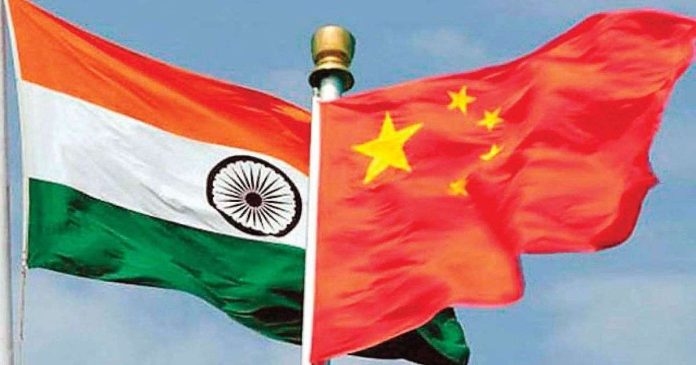India’s External Affairs Minister Subrahmanyam Jaishankar may disagree, but the country has failed to use its import trade muscle to improve its diplomatic relations with China. His recent statement on Sino-India relations at a gathering in Nagpur earlier this month that “a strife-torn border and good business can’t go together” lacks clarity and goes against the factual position with regard to the country’s growing imports from China despite the latter’s growing military postures along India’s land and maritime borders. The trade with China has been practically one-sided with India importing more and more from China and exporting less and less due to rigorous Chinese restrictions. India has failed to react. India continues to feed China and its economy with billions of dollars of imports every year helping the Chinese industry and trade keep millions of their people employed at India’s cost. This is irrespective of increasing Chinese military threats along India’s borders.
Even the highly aggressive Chinese armed attacks along the Sino-Indian border, including Pangong Lake site in Ladakh and the Tibet autonomous region, the Galwan river valley and near the border of Sikkim in 2020 did not lead to India’s import cut from China. India imported goods worth US$65 billion from China during 2020-21. In fact, for reasons best known to the Indian government, imports from China have reached record levels under the Narendra Modi government. During the last 10 years China has substantially raised its military and trade muscles in the broader South Asia region covering all countries surrounding India. They include Iran, Pakistan, Nepal, Sri Lanka, Bangladesh and Myanmar. The new Maldives government has already established close military and diplomatic relationships with China. The latter is also in the process of getting Bhutan, a close ally of India, under its fold.
India’s latest loss of influence over its tiny neighbour, Maldives, to China should add to its diplomatic concern. Newly elected Maldives President Mohamed Muizzu asked the government of India on 14th January to vacate its military presence by 15th March, this year. Incidentally, only 88 Indian military personnel are currently in Maldives assisting the country with maritime security and disaster relief efforts. While the deteriorated India-Maldives relations over the last 10 years do call for framing of an effective maritime doctrine by India, Jaishankar must explain why India lost its diplomatic grip over Sri Lanka and the Maldives to China and why does India continue to feed the Chinese economy with billions of dollars-worth imports every year. Clearly, India’s SAGAR diplomacy, launched at Mauritius in 2015 by Prime Minister Narendra Modi, has failed to restrict China’s growing influence in the Indian Ocean region. The SAGAR initiative stands for ‘Security and Growth for All in the Region.’
After the Narendra Modi government came to power, imports from China zoomed from $60.41 billion in 2014-15 to $94.57 billion in 2021-22. The trade deficit with China, which was around only 1.48 billion in 2004-05 increased to $36.21 billion in 2013-14. The bilateral trade climbed to $135.98 billion in 2022 while the country’s trade deficit with China crossed the $100-billion mark. The Modi government must explain this unusual trade bonhomie with China, which poses a real threat to India’s security and geographical integrity. China is being allowed to dump goods at will — from banned synthetic kite flying strings which are responsible for periodically slitting the throats of the public to high-end electronics and cyber crime devices, including card games. Suffice it to say that China’s share in India’s imports is alarmingly high. Lately, India is even importing automobiles, including passenger cars from Chinese manufacturers. Among the major Chinese electric vehicle manufacturing companies currently active in India are: BYD Auto, SAIC Motor, Great Wall Motors, Changan Automobile, Jinko Solar and Shenzhen Wuzhoulong Motors.
Thus, the Indian foreign minister’s statement with regard to linking the boundary and trade relations with China would appear to be of little consequence. China continues to hurt India’s defence and economy concerns with impunity. Contrary to the claim that India’s global stature has vastly improved under the present government, the support for anti-India Khalistani terrorists in Canada and the US speaks volume of such statements. Despite India’s rising wealth and economy in terms of the gross domestic product (GDP), the world’s most populous country is far from being considered as a global economic power. The economy continues to be highly import based despite the prime minister’s ‘Make-in-India’ initiative. The Modi government’s well-perceived attempt failed to achieve the desired objective in the absence of a strong China-focused import policy.
Maybe, after the coming Lok Sabha elections, the new government should ponder over the reason for India’s growing dependence on China for the supply of such a wide range of products as simple nail cutters and umbrellas to electronics, pharmaceutical intermediates and automobiles. The new government should take drastic measures – tariff and non-tariff – to severely cut down imports from China and use trade as a diplomatic tool to deal with China. The government should not fall for cheap ‘Bharat narrative’ put up subtly in state-run Chinese media, praising India’s significant strides in the spheres of economic, social governance and foreign policy under Prime Minister Modi. The article in Global Times might have been carried in anticipation of Narendra Modi-led Bharatiya Janata Party’s return to power for a third term. It is possible that China has taken Jaishankar’s trade-security linkage threat seriously.

































